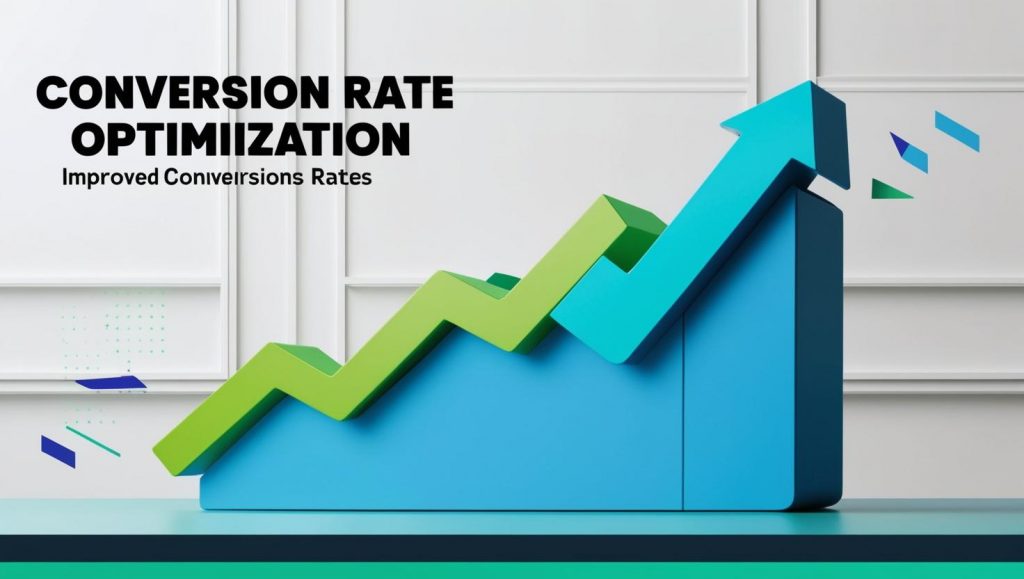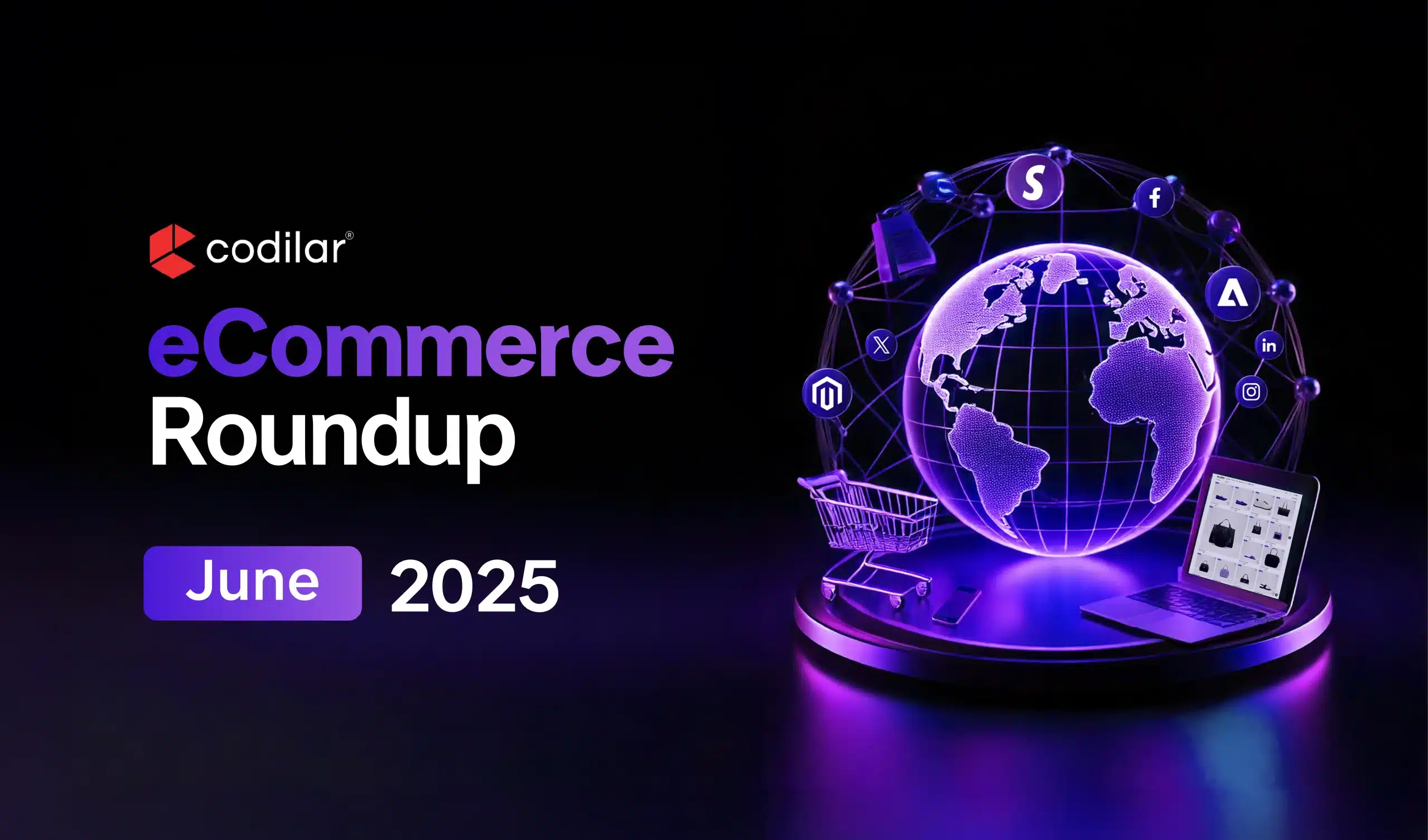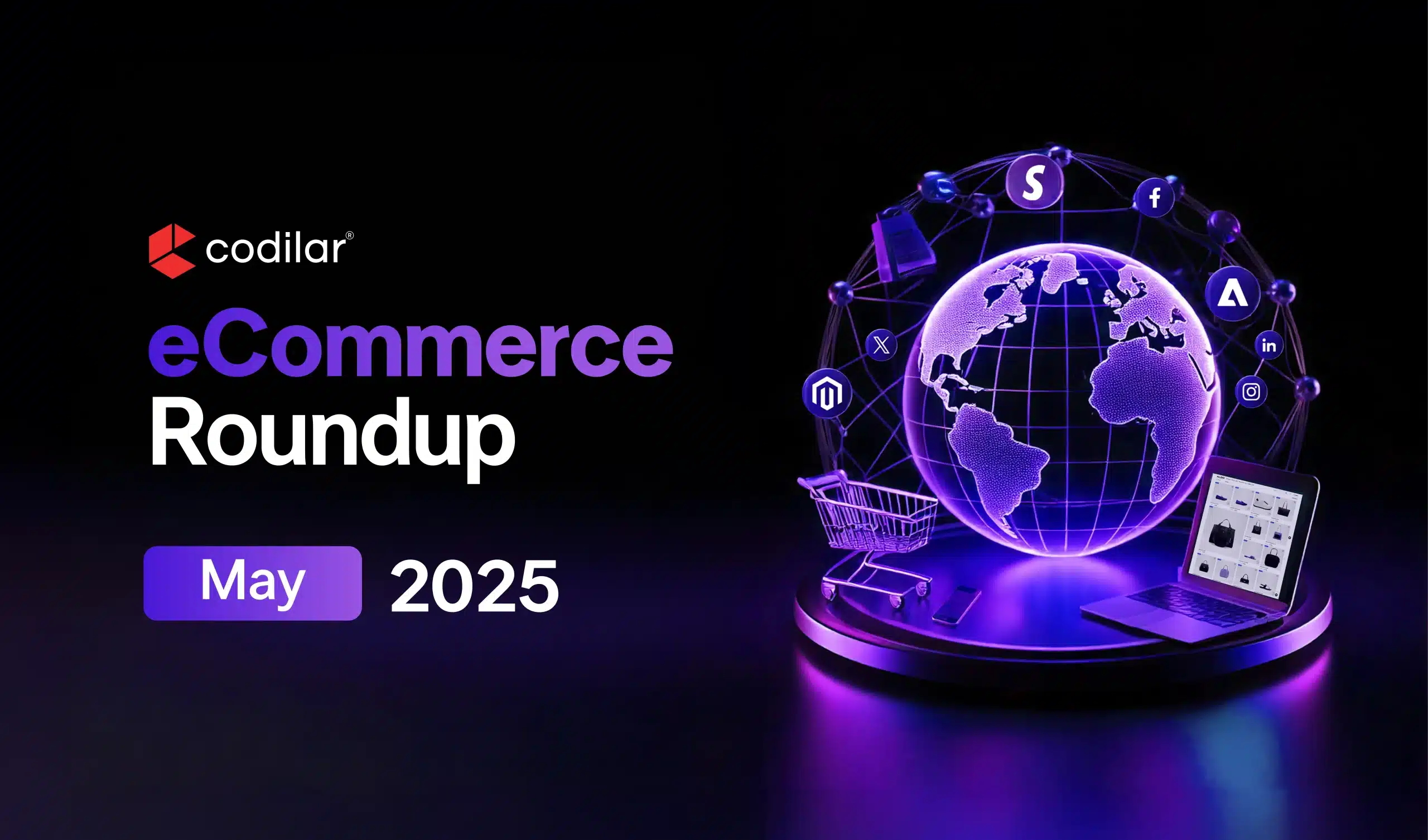- CRO helps with maximizing business revenue without spending more on marketing.
- Small tweaks like faster page loads or improved CTAs can lead to huge conversion improvements.
- Session recordings and heatmaps can help analyze customer behavior and spot the drop-off points.
- A/B testing makes sure that your CRO strategy is data-driven.
- Using psychological triggers like scarcity or social proof helps with better conversion.
- CRO is an ongoing process, rather than a one-time optimization.
Businesses spend thousands of dollars in marketing and advertising to get traffic to their stores, only to have them leave without taking action! This has become a common occurrence, and 90% of the time, poor conversion is the culprit. Conversion Rate Optimization (CRO) is the final step of your marketing endeavor, which ensures that businesses can capitalize the most out of their traffic.
Instead of focusing on increasing traffic, businesses can derive the most value out of the existing ones with CRO. In this blog, we discuss why CRO is an essential strategy for your business’s success.
What is Conversion Rate Optimization?

In a nutshell, CRO is the process of refining website elements to encourage traffic to take the desired action. The conversion can be anything, from buying a product/service to filling out a form or signing up for a newsletter.
Optimizing conversion rate involves a detailed analysis of user behavior, testing different web page versions, and modifying content and design to improve customer journeys. CRO empowers businesses to make data-driven decisions and deliver better user experience to get more conversions.
Why is CRO Important for Businesses?
CRO impacts many important aspects like user experience, marketing efficiency, and revenue generation, which makes it a key to business growth.
Increased Revenue & Profitability
Even a 1% increase in conversion rate can add thousands in revenue without increasing the marketing budget. An improved conversion rate can significantly add to your sales, leveraging the existing traffic.
Optimizing conversion rate becomes a powerful tool for sustainable growth as it ensures that the existing visitors convert at higher rates, which reduces the need for constant investments in new traffic acquisition.
Data-Driven Decision Making
A successful CRO strategy helps with data-driven decision-making, reducing guesswork and improving revenue. From user behavior analysis to A/B testing, businesses can leverage data to optimize their sites.
Tools like Hotjar (for heatmaps and session recordings), Google Analytics, and Adobe Analytics can help businesses get critical insights into user behavior, which can help with optimizing content, CTAs, navigation, etc.
Reduced Customer Acquisition Costs
Probably one of the key benefits of CRO, the reduced customer acquisition costs directly help businesses stay more profitable. By helping businesses maximize their existing visitors, CRO eliminates the need for excessive paid marketing campaigns to acquire new customers. This not only helps with a better ROI but also adds to long-term profitability for businesses.
Improved User Experience
User experience can make or break your website’s success and business growth. When visitors find your website easy to navigate, they are more likely to take the action you want them to. Things like slow page loads, broken links, poor navigation, and confusing layouts can drive visitors away.
But CRO can refine your website navigation, design, and content to deliver smooth user experiences. By addressing the customer pain points, CRO directly impacts customer engagement while encouraging your traffic to convert. An effective CRO strategy can also help with improved retention rates through improved customer trust and loyalty.
Enhanced SEO Performance
Improved SEO performance is a byproduct of a well-planned CRO. As it improves your customer engagement, you get longer session times and reduced bounce rates, which become positive ranking factors for search engines.
Since user experience is one of the key ranking factors, the faster loading time, easy navigation, and optimized content help with enhanced search visibility. When you optimize your website, not only does it ensure more conversion but also guarantees improved SEO performance as visitors stay longer and interact more.
Continuous Improvement
Businesses that leverage CRO remain highly competitive and adaptable to market changes and new trends. With timely heatmap analysis, A/B testing, and user feedback, they can transform customer journeys drastically over time. Conversion rate optimization ensures that businesses can stay ahead of the curve while enjoying long-term success and sustainable growth.
Understanding Your Audience
One of the most notable benefits CRO offers is an unparalleled understanding of the audience. With session recordings, surveys, and heatmaps, you can analyze how users interact with your website and understand user behavior in the best way possible. Based on that, you can adjust your messaging, improve products, and deliver more personalized customer experiences.
Thanks to CRO, businesses can leverage data to address pain points and meet customer expectations, which helps in building loyalty.
An Effortless Customer Journey
With a successful CRO strategy, you can build powerful customer journeys and optimize them over time. It enables businesses to turn every touchpoint friction-free, delivering clear and engaging performance.
Using CRO, businesses can eliminate unnecessary elements, refine navigation, and clear the purchase process of any extra steps. All this makes sure that the customers are engaged for longer, trust the platform, and take the desired actions, helping with the marketing goals.
Maximizing Marketing ROI
Instead of working on assumptions, CRO is fully based on real data! This is particularly helpful in preventing overspending on marketing with little to no real impact. Conversion rate optimization focuses on maximizing the existing visitors instead of gaining more traffic.
With optimized landing pages and conversion funnels, CRO can lower cost-per-acquisition (CPA) and deliver higher returns on marketing spends. Businesses that integrate CRO with their marketing strategy tend to get more cost-effective results.
Tools to Analyze User Behavior
Understanding user behavior in detail is the key to CRO success. There are a number of tools available in the market that help you analyze user interactions, understand friction points, and optimize website components.
Heatmaps
Heatmaps are one of the most popular ways to optimize conversions. They display the exact areas on a page where users click, scroll, and hover. Moreover, they also spot the sections that get the most amount of engagement and the areas that are ignored by visitors. This data can be leveraged to improve layouts, reduce distractions, and optimize CTA placements for better conversions.
Session Recordings
By leveraging session recordings, you can watch your user interactions in real-time. They show you how your visitors are navigating your website, which can help you discover the weak points of your website like slow-loading pages or poor navigation. The targeted improvements through real-time user interactions can lead to smoother customer experiences and higher conversion rates.
Form Analytics
The form analytics tools help identify the problematic form fields, from the ones taking longer to complete to the ones leading to abandonment or causing confusion. The form analytics track user interactions and help businesses optimize the forms and make the process faster by removing unnecessary fields and improving clarity.
Surveys & Feedback Forms
User feedback is an excellent way to understand user pain points and make improvements for better conversions. With surveys and feedback forms, you can get the exact issues visitors and customers are facing without doing any kind of guesswork or even any analysis. When users answer questions like “Why didn’t you complete your purchase?”, businesses can understand the concerns directly.
A/B Testing Tools
A/B testing has become synonymous with CRO because of its effectiveness. By comparing different web page versions, A/B testing helps determine the page that’s performing better, leading to a better understanding of what’s working and what’s not! You can test different page elements, from headlines to CTAs, colors, and layouts to make data-driven improvements based on the responses you get from users.
Google Analytics & CRO Platforms
You can track important metrics like bounce rate, conversion paths, and session duration with CRO platforms and Google Analytics. Get data on user demographics, traffic sources, site interactions, and many more with these tools, which can help you test hypotheses and identify trends to boost performance.
Key CRO Strategies & Best Practices
The best CRO strategies leverage psychological triggers and improve user experience to enhance customer journeys and boost conversions.
Optimizing UX & Website Performance
- Page Loading Time: Even a one-second delay in your page loading time can destroy conversion. Optimize load times by compressing images/videos, minimizing scripts, and enabling caching.
- Mobile Responsiveness: Ensure fast loading, adaptive design, and smooth navigation to cater to the huge number of smartphone users.
- Clear Navigation: Improve ease of use with simple navigation that includes intuitive menus, logical user flows, and structured content.
- Remove Distractions: You should eliminate unnecessary elements like meaningless pop-ups to get a clutter-free design.
- Improve Accessibility: Work on your website’s accessibility, even for users with disabilities.
Psychological Triggers in CRO
- Scarcity & Urgency: Phrases like “Limited-Time Deal” or “Only 7 Left in Stock” create FOMO and instigate fast action.
- Social Proof: Highlighting awards or customer testimonials creates brand authority and builds trust.
- Clear Value Proposition: Clearly mention the benefits of your product/service for your customers to encourage purchase decisions.
- Cognitive Load Reduction: Users can be overwhelmed with too many choices. Keep your navigation and CTA simple to promote easy decision-making.
- Trust Signals: Include customer ratings, money-back guarantees, and security badges to build confidence in users.
Optimizing Marketing & CRO Together
- A/B Testing Landing Pages: Test different headlines, CTAs, and layouts to determine the best-performing version.
- Consistent Messaging: Keep the landing page content and ad copy aligned to reduce confusion and increase trust.
- Personalization: Analyze user demographics and behavior to deliver personalized offers.
- Retargeting Campaigns: Show personalized ads and send targeted reminders to visitors who abandoned the site.
- Data-Driven Refinements: Optimize content, CTAs, layouts, and other elements, using the analytics data.
Common CRO Mistakes to Avoid
While CRO is the best way to increase revenue without increasing marketing spends, many businesses fail to do so because of some common CRO mistakes.
Ignoring Mobile Optimization
Standing in today’s mobile-first age, a non-mobile-friendly site misses out on the huge volume of mobile traffic. Not optimizing your site for mobile devices can lead to unresponsive designs, slow page loads, complicated navigation, and frustrated users. This disrupts user experience and increases bounce rates.
Making Changes Without Testing
Many businesses make random modifications to their website elements without testing them first. A lot of times they even repeat another company’s CRO strategy! As CRO is all about business-specific, data-driven decisions, this often backfires. Without A/B testing, businesses fail to decide on the messaging, CTAs, design, or layout that works for them.
Complex Forms and Checkout Processes
Lengthy and complex forms with unnecessary form fields are a common mistake repeated by many businesses. This can lead to frustrating user experience and abandonment. When it comes to checkout processes, forcing to create an account or showing unclear error messages also adds to the user’s pain points. On the other hand, autofill, guest checkout, one-click payments, and progress indicators are some of the best ways to boost conversions.
Neglecting User Feedback and Analytics
Ignoring user feedback and visitor data can significantly hurt your conversion rate. You get valuable insights into user behavior and pain points from heatmaps, session recordings, and surveys, which can be leveraged to make data-driven improvements and cater to customers.
Measuring CRO Success
Since CRO is a data-driven process, success is measured by various key metrics using different tools.
Key Metrics
To optimize conversions, a number of different metrics come into play. Here are the most significant ones – bounce rate, customer lifetime value (CLV), cart abandonment rate, and revenue per visit (RPV). By studying them regularly, you can pinpoint your site’s weaknesses and make improvements.
Tools for Measuring CRO
You can use tools like Google Analytics, Adobe Analytics, Lucky Orange, Hotjar, Kissmetrics, Crazy Egg, etc. to get valuable insights into user behavior, conversion funnels, source of traffic, and customer lifetime value. By using these tools, you can make further refinements.
Continuous Tracking and Improvements
To keep your conversion rates at par, make sure you are continuously monitoring user behavior and interactions through regular A/B tests and refinements.
Real-World Success Stories in CRO
Here are some real-world stories of how optimizing conversion helped businesses!
Broken Tractor
Broken Tractor saw a spike in purchase completion and customer satisfaction after optimizing site navigation. They used heatmaps and session recordings to refine navigation elements and product categories.
Dia Creative
Dia Creative identified that their conversion suffered because of unclickable product images. By making them clickable and adjusting their placement, the brand saw an increase in conversion rate from 1.75% to 3.1%!
Miss Amara
Miss Amara got a 231% boost in conversion rates, simply by recognizing customer friction points through session recordings and heatmaps. The online rug retailer redesigned product pages, simplified the checkout process, and refined their navigation to get the result.
Conclusion
CRO is more than just numbers. It is a proven approach to enhance user experience and customer journey. With an effective CRO strategy, businesses can ensure growth in revenue and user engagement while reducing marketing spends. In a nutshell, CRO is an integral part of modern digital success.











